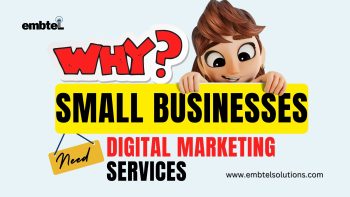As any reliable, competent SEO practitioner will tell you today. The content used to write a site is one of the single greatest factors in obtaining high-quality search rankings across a variety of engines.
Ecommerce sites with detailed product or service information covering their specific niche are more successful online. What do they have in common? All of them realize that content drives the web and thus their site.
The most successful sites focus on a multi-pronged “successful content strategy” that makes use of most of the following simple content strategies to improve their product page content. Some of the secrets are as follows –
Proofread your site or hire a proofreader:
Sites filled with errors in spelling and grammar may lead visitors to believe you are careless. If they think you are a careless proofreader, they may also think you’re a careless service provider or product manufacturer.
Relevant Content:
Make sure your Web page content is relevant to your business. Don’t use content that has nothing to do with your business or your customers. Web users are looking for information, so make sure they’re getting the information that they need.
If you’re an accountant, for example, provide information on tax laws, starting a business, and other topics related to your field.
Don’t use free content:
Imagine that you’re a Web user and you just performed a search for “how to make quilted handbags.” The first 2 pages of results all have the same exact article posted on different Websites.
There is nothing helpful or unique for you to read and learn about the topic you’re interested in. That’s how people feel when Web site owners use free content instead of developing their own. It doesn’t improve the user experience and can leave visitors feeling frustrated.
If they’re frustrated with you from the moment they visit your site, you can bet they won’t be buying from you.
Stop writing for the search engines:
Keywords are important for generating traffic, but traffic won’t do you any good if no one can understand your content. Instead of stuffing your Web page content with keywords, use them naturally and make sure the content is not difficult to read.
If it is, remove the keywords or try using them in different content sections. Use tools such as Semrush or Ahrefs to find out targeted keywords for your website. This comparison – Semrush vs Ahrefs can help you to choose which one is best for you.
Review your content:
Review your content to make sure it can be read by visitors at many different reading levels. You can use short sentences and avoid words with many syllables to give your readers content that they can understand (unless you are writing for a highly specialized group, such as physicians or engineers).
Write content that is tailored to your audience:
If you read your site copy and find lots of self-focused verbiage (us, our, we) as opposed to more customer-friendly language (you, you’re), then your content isn’t being written with your audience in mind.
This is by far the single most common mistake editors make when writing their site marketing copy.
Don’t forget your audience. Site content needs to speak to the site visitor, and you can’t do that in the first person.
Write your content to elicit an emotional response:
Are you passionate about your website? Does your site content communicate this to your audience? If not, you’re missing out on a valuable tool to market your product or service.
Make sure to write your site content with a strong “call-to-action” whenever possible. If you don’t tell them what you want them to do on your site, they won’t do it.
Always have a look at your rivals and their strategy. Using Semrush, all the online marketing strategies of your competitors can be revealed. You can activate the Semrush free trial and use it for free.
Vary your content choices to heighten visitor site interaction:
Each page of your site is a unique entry and exit point for visitors to view your content. Thus, each page of your content-rich site should be varied and engaging to the reader.
Using different forms of content throughout your site is an extremely effective way to encourage repeat visits and benefit from word-of-mouth marketing from satisfied users.
To accomplish this, design pages containing FAQs, step-by-step product tutorials, interactive video content, online tools, and/or site-specific content links. Mix these pages up and watch your site referrals skyrocket.
Don’t ignore Navigation:
One thing that you should have near the top of your page, even if it is off to one side, is a clear website navigation system. Users want to be able to easily find the pages, products, or information they need, so make sure that you offer a seamless navigation menu that is clearly labeled.
If you sell a large number of products or have a great deal of information on your site, an integrated search feature can mean the difference between keeping and losing a visitor.
Conclusion:
The ultimate goal of a landing page is to improve the percentage of visitors to a website that either become sales leads and eventually customers.
Ecommerce companies aim to provide page content and appearance that makes the webpage more appealing to the targeted user. They do so by displaying text, images, relevant links, and other elements.
The efficiency and quality of the page are measured by the conversions that it produces.
Any and all of these content choices, used with the interests of your audience clearly in mind, will go a long way to ensuring the success of your eCommerce product page content strategy and your site in general.
Improving your Web page content is one of the first steps you can take to improve the experience of visitors to your eCommerce Web site and could be the change you need to grow your business to the next level. Website Maintenance Services.





